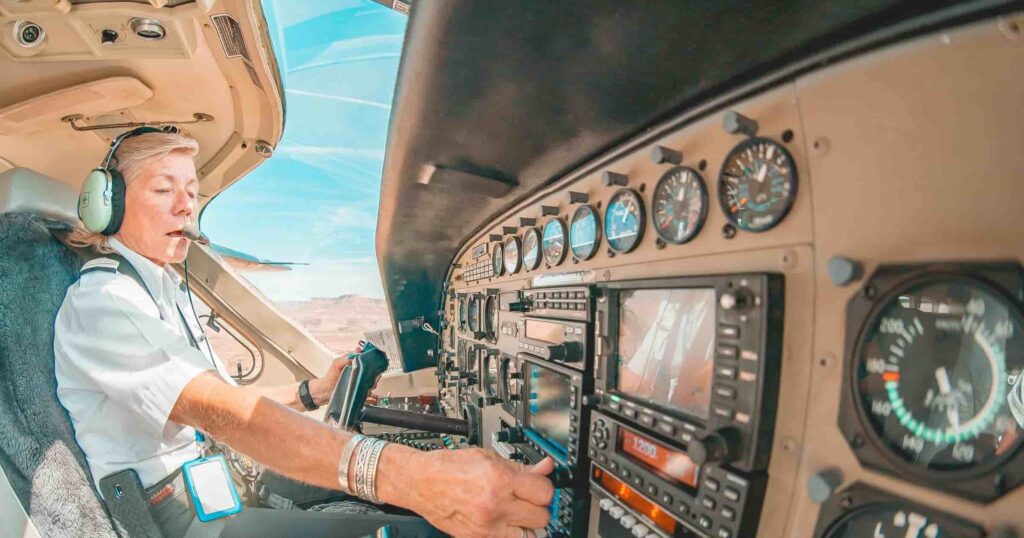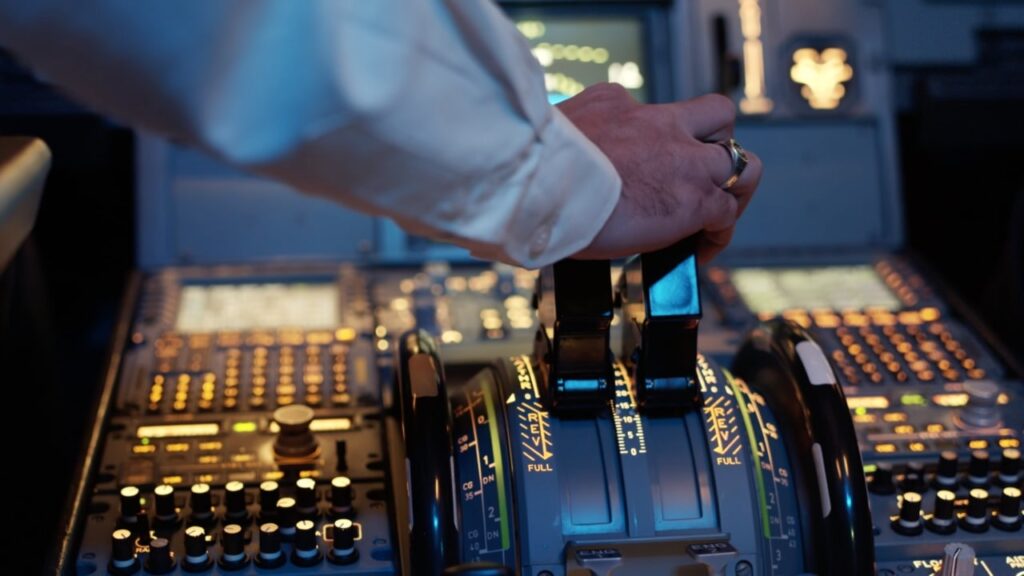In StarCraft, a pilot enhances Marine effectiveness by providing tactical oversight and coordinating strategies during battles. Their leadership boosts morale and optimizes unit performance on the battlefield.
In this article we will discuss “ How Does a Pilot Fit in StarCraft Marine”.
The Essential Role of Pilots:

In StarCraft, pilots serve as the critical link between command and execution on the battlefield. Their responsibilities extend beyond simply overseeing Marines; they are instrumental in optimizing the performance and coordination of their units in various combat scenarios.
1. Command and Tactical Oversight:
Pilots provide essential command and tactical oversight for Marine units. Their role involves directing Marine movements and engagements, making real-time decisions that can alter the course of battles. A skilled pilot understands the nuances of combat and can leverage their knowledge to enhance the performance of their squad. For instance, they can direct Marines to take advantageous positions, utilize cover effectively, or execute flanking maneuvers against enemy forces.
The pilot’s ability to assess the battlefield situation and adapt their strategy is vital. In scenarios where enemy forces employ effective defensive formations, a pilot might instruct their Marines to perform a pincer movement, allowing them to encircle and outmaneuver the opposition. This kind of tactical insight is crucial for overcoming superior enemy forces and maximizing the Marines’ impact.
2. Enhanced Combat Performance:
While Marines are formidable infantry units, their combat performance is greatly amplified by proficient pilots. A pilot can improve a squad’s combat capabilities by ensuring that Marines are positioned effectively and utilizing their weapons to full potential. For example, they may prioritize targets based on the threat level, directing Marines to focus fire on enemy spellcasters or high-damage units, thereby neutralizing significant threats.
Moreover, pilots can implement strategies that enhance the Marines’ synergy. For instance, coordinating grenade throws with weapon fire can maximize damage output during engagements. A well-timed combination of burst damage and area control can turn the tide in challenging encounters.
3. Quick Decision-Making in High-Pressure Situations:
The battlefield is a dynamic environment where conditions can change rapidly. Pilots must make quick, informed decisions based on real-time data. Their ability to analyze threats, assess enemy movements, and anticipate changes is crucial for survival. In high-pressure scenarios, such as when ambushed by Zerg forces or outmaneuvered by Protoss, pilots need to think on their feet.
For instance, if a Marine squad encounters a sudden Zergling rush, the pilot may need to instruct Marines to fall back to a chokepoint where they can utilize their superior firepower effectively. Quick thinking and adaptability are essential traits that enable pilots to navigate these critical moments.
4. Leadership and Morale:
Effective leadership is paramount on the battlefield, and pilots play a crucial role in maintaining morale among their Marines. During intense engagements, a pilot’s ability to inspire confidence can significantly affect unit performance. By providing clear directives and fostering a sense of camaraderie, pilots help create a cohesive fighting force.
In prolonged battles, morale can wane. A pilot who remains calm under pressure and communicates effectively can bolster the resolve of their Marines. This leadership quality not only enhances unit performance but can also lead to improved survival rates in challenging situations.
The Pilot-Marine Synergy:

The relationship between pilots and Marines is foundational for successful combat operations. This synergy manifests in several key areas:
1. Training and Familiarization:
Pilots and Marines undergo extensive training to operate effectively as a team. This training emphasizes understanding each other’s roles and capabilities, fostering a collaborative environment. For example, pilots learn about the specific strengths and weaknesses of their Marines, allowing them to make informed decisions that enhance combat efficiency.
In practice, this might mean knowing when to call for heavy fire support or understanding which Marine excels in close-quarter combat. Familiarity breeds trust, enabling Marines to follow their pilot’s directives without hesitation.
2. Communication Dynamics:
Clear communication is essential for operational success. Pilots must relay critical information to their Marines, including enemy positions, tactical updates, and orders for movement or attack. This real-time communication allows for rapid adjustments during combat and ensures that all team members are aligned in their objectives.
In a chaotic firefight, effective communication can mean the difference between success and failure. Pilots who can articulate their strategies clearly and concisely help eliminate confusion, enabling their Marines to execute maneuvers with precision.
Also Read: Does Planet Fitness Have Red Light Therapy – Everything You Need to Know!
3. Coordination with Other Units:
Pilots also play a pivotal role in coordinating actions with other Terran units. For example, while Marines engage enemy forces, a pilot may direct a Medivac to provide medical support or call in a Siege Tank for long-range fire. This integration of various unit types maximizes battlefield effectiveness and allows the Terran forces to leverage their collective strengths.
A well-coordinated attack that combines the strengths of Marines, Tanks, and Air Support can create overwhelming pressure on the enemy. Pilots are at the helm of these operations, ensuring that all units work together seamlessly.
4. Adaptation to Environmental Changes:
The battlefield in StarCraft is often influenced by terrain and environmental factors. Pilots must be adept at reading these changes and adjusting tactics accordingly. For instance, utilizing high ground can provide a significant advantage in combat, allowing Marines to engage enemies while minimizing exposure to return fire.
A pilot’s ability to assess terrain and adapt their strategy can lead to critical victories. By directing Marines to occupy advantageous positions, pilots ensure that their forces can maximize damage while minimizing risk.
The Influence of Technology on Pilots:
Technological advancements play a significant role in how pilots operate Marine units. The integration of advanced targeting systems, communication tools, and battlefield analysis software enhances the pilot’s ability to command effectively.
1. Tactical Analysis Tools:
Modern warfare in StarCraft is increasingly reliant on technology. Pilots often utilize tactical analysis tools that provide real-time information about enemy movements, terrain layouts, and resource availability. This information is invaluable, allowing pilots to make informed decisions that can turn the tide in battles.
For example, if a pilot observes an enemy army gathering in a specific location, they might redirect their Marines to prepare for an ambush or set up a defensive position. This level of situational awareness is crucial for maintaining the initiative on the battlefield.
2. Communication Systems:
Advanced communication systems enable pilots to maintain contact with their team and receive updates from other units. This real-time connectivity ensures that pilots can react promptly to changing conditions and coordinate actions effectively. In fast-paced battles, where every second counts, reliable communication is a game changer.
FAQs:
1. What is the primary role of a pilot in StarCraft?
Pilots provide tactical oversight and command for Marine units, enhancing their combat effectiveness and coordinating strategies during battles.
2. How do pilots improve Marine performance?
By directing movements and prioritizing targets, pilots optimize Marines’ combat capabilities, ensuring they maximize damage and efficiency in engagements.
3. What qualities are essential for a successful pilot?
Quick decision-making, strong leadership skills, and effective communication are crucial traits that enable pilots to navigate high-pressure battlefield situations successfully.
4. How do pilots train with Marines?
Pilots and Marines undergo extensive training to understand each other’s roles, fostering a collaborative environment that enhances trust and combat efficiency.
5. What technological tools do pilots use in battle?
Pilots utilize advanced tactical analysis tools and communication systems to make informed decisions and coordinate actions effectively during dynamic combat scenarios.
Conclusion:
In the intricate landscape of StarCraft, pilots are essential to the success of Marine units. Their roles encompass command and control, tactical decision-making, and fostering unit morale. The synergy between pilots and Marines is critical, emphasizing the importance of communication, training, and coordination in combat operations.